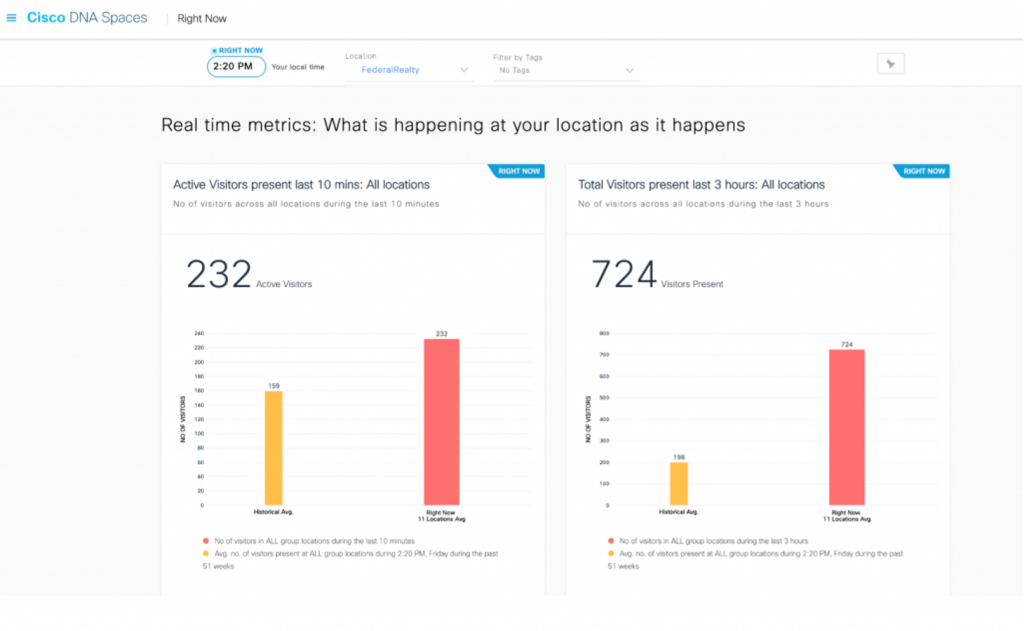- I tested a Pixel Tablet without any Google apps, and it's more private than even my iPad
- My search for the best MacBook docking station is over. This one can power it all
- This $500 Motorola proves you don't need to spend more on flagship phones
- Finally, budget wireless earbuds that I wouldn't mind putting my AirPods away for
- I replaced my Linux system with this $200 Windows mini PC - and it left me impressed
Modernized IT: Cisco’s Road to intent-based networking – Cisco Blogs

To operate at the speed of business today, network automation, integrated security, and AI-power insights are needed. At Cisco, we are transforming customer networks with intent-based networking.
Like most journeys, the journey to intent-based networking can be different for every networking team. In my regular interactions with IT practitioners, I hear that networking projects are often planned and prioritized on the basis of short-term demands. I understand why this is the case, but I think there is a much more effective approach.
An approach where each project is simply another step in a master plan towards a more advanced network. Taking a strategic approach to advancing your network can be difficult. It takes time and resources to develop a long-term vision and roadmap – both of which are often scarce.
That’s why our own IT team decided to share their personal “Road to Intent-Based Networking.” Their expectation is that by sharing their own plans and experiences they will inspire and help you create your own roadmap. Using an interactive roadmap, the Cisco IT team is sharing insights and lessons learned from their own ongoing network transformation across Access, WAN, and Data Center/Cloud networks.
As the network team passes each milestone or project, they update the map with their latest experiences and lessons learned. Below, are some of the latest milestones in Cisco IT’s journey.
Simplifying NetOps for our access network
Like most networks, Cisco’s own network is constantly faced with changes. It needs to accommodate new kinds of endpoints–like sensors, cameras, and digital signage–and new distributed applications. This adds a huge burden on our network operations, who must make sure that these changes don’t compromise any users or data.
In his blogs, IT manager Travis Norling describes how his team has improved access security by simplifying network segmentation, using Cisco SD-Access technology. Learn more about why and how he has deployed SD-Access across multiple campus buildings.
“Now we define access policies once, and they’re consistently enforced everywhere in the network. SGTs travel with traffic everywhere it goes, so there’s no need to configure separate policies for the WAN, data center, and internet. This makes it easier for us to set up the zero-trust networking needed in a hybrid cloud environment. No matter where and how a user connects, we have a consistent policy from end to end.” -Travis Norling, Cisco IT Manager
Securing access for remote workers anywhere
Say that a teleworker has an application that is slow or their connection drops. Their first instinct is to blame the equipment. Now, when the Cisco IT team is called up, they can immediately see that the problem lays in the worker’s ISP, not our network.
Better visibility is one of several ways our IT team is improving the telework experience at Cisco. By combining cloud-managed SD-WAN technologies with cloud-based security technology, we are on the road to a full Secure Access Service Edge (SASE) implementation. An implementation that provides consistently secure access–wherever Cisco employees choose to work.
In this blog, Dean Sanders shares 5 ways Cisco IT is improving telework with SD-WAN and telemetry.
A safe return to the office
Employee safety is our first concern as we gradually welcome employees back to Cisco offices across the globe. Before allowing employees to return, our Workplace Resources team wanted to make sure that employees will practice social distancing—not standing or sitting too close or gathering in large groups.
In his blog, Jon Heaton describes how his networking team is working to manage a safer return to the office.
Because they needed a solution quickly, the team sped up their plans to deploy Cisco DNA Spaces. A cloud-based, indoor location services platform that turns existing wireless networks into a sensor.
Now the workplace resources team receives alerts when density or device count in a certain area exceeds our thresholds. The DNA Spaces Right Now App shows wireless density in near real-time, for a site, building, floor, or zone (Figure 2).

Cisco DNA Spaces allows us to safeguard our employees. Once we collect this information from people and devices, we can enhance workplace safety, efficiency, and resource management.
Begin your journey
We couldn’t be more excited to share our journey with you. We hope the experiences that Cisco IT continues to share through the roadmap enable you to take a strategic approach to advancing your network. Feel free to keep an eye out for updates on our journey to intent-based networking. I look forward to reading any comments you post below.
- Check out this useful video to help you navigate the journey map
- Learn more about our journey to an advanced network architecture by clicking through our interactive journey map
Check out our Cisco Networking video channel
Subscribe to the Networking blog
Share:

